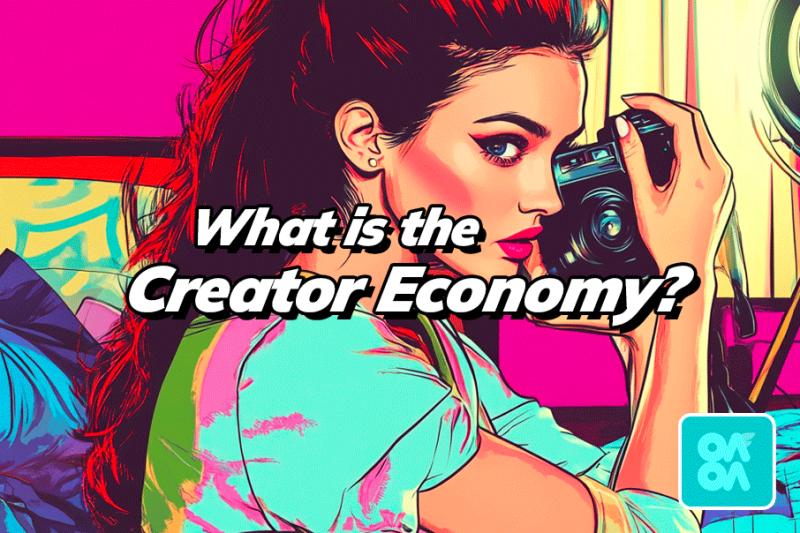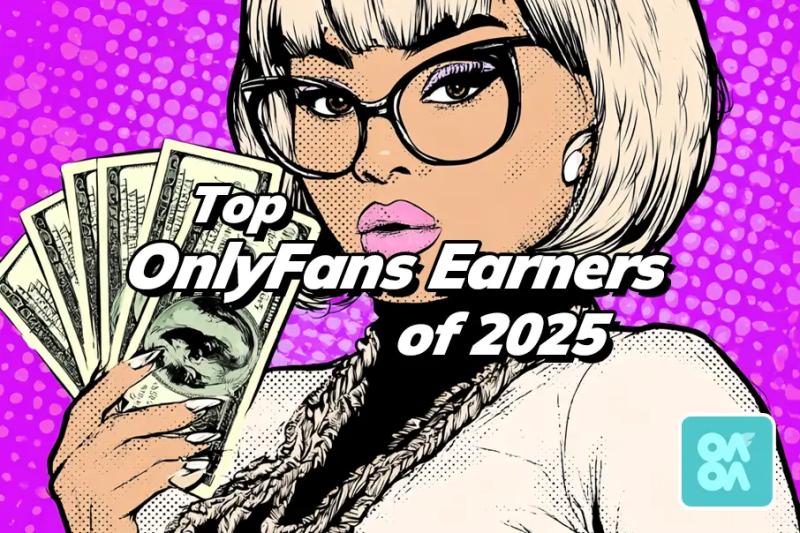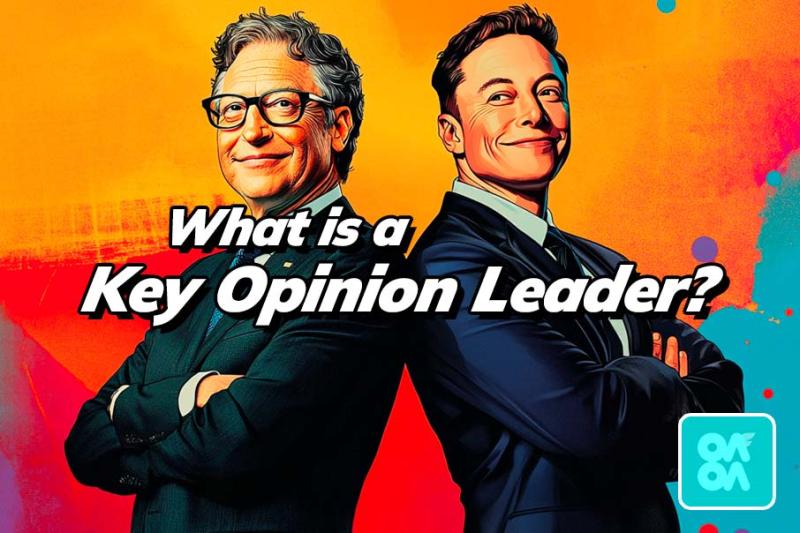What is Influencer Marketing?
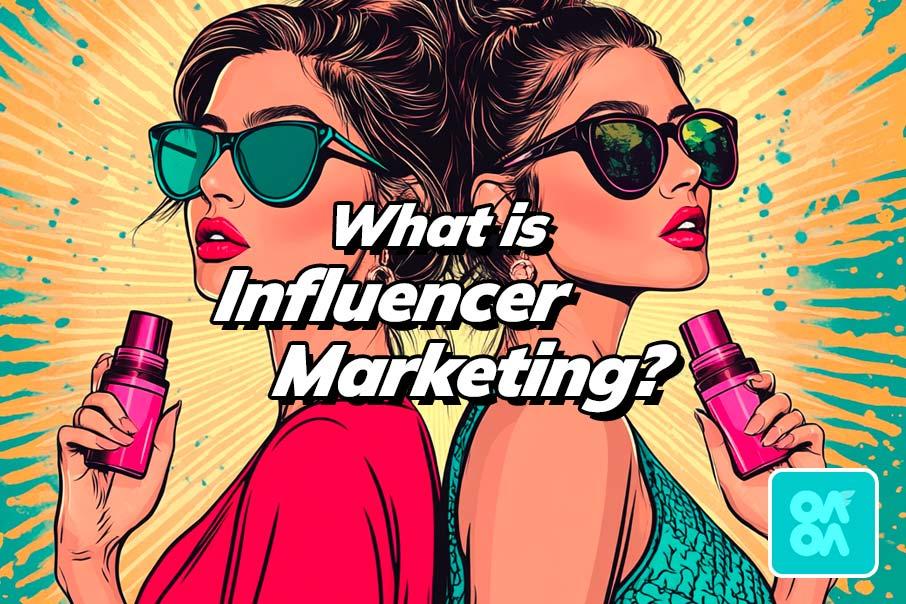
An influencer is someone who has the power to affect the purchasing decisions of others because of their authority, knowledge, position, or relationship with their audience.
This influence typically comes from their content on platforms like Instagram, TikTok, YouTube, X (Twitter), or blogs.
Unlike traditional celebrities, influencers can emerge from any walk of life.
They may be makeup artists, fitness coaches, tech geeks, book lovers, gamers or even gardening enthusiasts.
What sets them apart is the engaged audience they build around a specific niche.
Influencers often become trusted sources of information and recommendations.
Their followers value their opinions because they feel like real people - accessible, authentic, and relatable.
This trust is the foundation of their influence and is what makes them so valuable to brands.
Chapters
- Types of Influencer
- How Do Influencers Make Money?
- Sponsored Content
- Affiliate Marketing
- Brand Ambassadorships
- Product Collaborations and Merchandise
- Paid Subscriptions and Fan Support
- Events, Appearances and Speaking Engagements
- How Much Can Influencers Earn?
- Benefits of Influencer Marketing
- Pitfalls of Influencer Marketing
- Influencer Marketing vs Celebrity Endorsements
- Best Platforms for Influencer Marketing
- Steps for a Successful Influencer Marketing Campaign
- 1. Identify Influencers
- 2. Set Your Budget
- 3. Determine Goals and Messaging
- 4. Build an Outreach List
- 5. Review and Refine
- Common Influencer Marketing Campaign Mistakes
- No Defined Goals and KPIs
- Lack of Influencer Authenticity Research
- Choosing Followers Over Engagement
- Poorly Conceived Brief
- Restricting Influencer's Creative Input
- Not Setting Expectations
- Focussing on Vanity Metrics
- No Contract Terms
- Key Takeaways
Types of Influencer
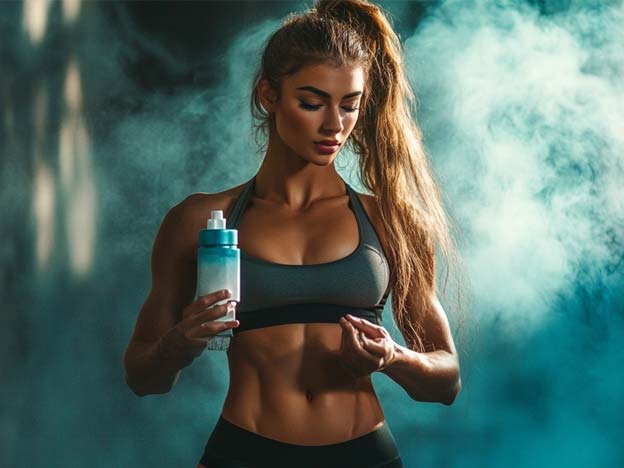
The influencer landscape is diverse, and individuals are usually grouped into categories based on the size of their following.
Each category brings its own set of advantages and limitations.
Mega Influencers
Mega influencers are the big names, often being celebrities, TV personalities, or internet-famous individuals who have over 1 million followers.
They have enormous reach, but their engagement rates can sometimes be lower than influencers with smaller audiences.
Brands often use mega influencers for brand awareness campaigns, particularly for high-profile product launches or global marketing efforts. However, this comes with a hefty price tag.
Macro Influencers
Macro influencers typically have between 100,000 and 1 million followers.
They are usually well-established in their niche, whether that’s fashion, gaming, tech, or travel, and are considered to be more accessible than mega influencers.
Because of their focused content and still sizeable following, macro influencers offer a balance of broad reach and relatively high engagement.
They’re commonly used by both large and medium-sized brands.
Micro Influencers
Micro influencers have between 10,000 and 100,000 followers.
Their content often focuses on a specific niche, such as vegan food, slow fashion, indie gaming, or local travel.
What micro influencers lack in reach, they make up for in trust and engagement.
Their audiences tend to be highly engaged, loyal, and interested in the content being shared.
Brands seeking a targeted approach often prefer working with micro influencers for better ROI.
Nano Influencers
Nano influencers typically have fewer than 10,000 followers.
They are everyday people with small but highly engaged audiences.
Their recommendations often come across as authentic and personal.
Despite their smaller scale, nano influencers can be incredibly valuable, especially for local businesses or niche products.
Collaborations with nano influencers are often more affordable and can yield impressive engagement rates.
How Do Influencers Make Money?
Influencers generate income on platfroms like OnlyFans in a variety of ways, depending on their niche, platform, and level of reach.
While sponsored posts are the most well-known form of monetisation, influencer earnings have become increasingly diversified as the industry has matured.
Here are the main ways influencers typically make money:
Sponsored Content
This is the most common income stream.
Brands pay influencers to create and share content that promotes a product or service.
This might be a single Instagram post, a story, a YouTube video review, or a TikTok trend featuring the product.
The price depends on audience size, engagement rates, and how much work the content requires.
Larger influencers can command thousands of pounds per post, while nano influencers may receive free products or smaller fees.
Affiliate Marketing
Influencers can also earn commissions through affiliate marketing.
They share special links or codes that track any sales they generate.
For example, an influencer may promote a fashion brand and earn a percentage of every sale made through their unique link.
This model is particularly popular with bloggers, YouTubers, and those with audiences actively seeking product recommendations.
Brand Ambassadorships
Some influencers enter long-term partnerships with brands as ambassadors.
This typically involves multiple sponsored posts over a period of months, in exchange for a retainer or fixed contract fee.
These deals often include additional responsibilities such as appearances, exclusive content, or product development input.
Product Collaborations and Merchandise
Influencers with strong personal branding often launch their own product lines or collaborate with existing brands.
These co-branded products can range from clothing and makeup to digital courses or even food and beverage ranges.
Some influencers also sell their own merchandise, such as t-shirts, mugs or planners, especially if they have a devoted fan base.
Paid Subscriptions and Fan Support
Platforms like Patreon, YouTube Channel Memberships, and Instagram Subscriptions allow influencers to earn from their most loyal followers through exclusive content, behind-the-scenes access, or community perks.
Events, Appearances and Speaking Engagements
Influencers, particularly those with expertise in a specific area, may be paid to appear at events, speak at conferences, or participate in branded campaigns outside social media.
How Much Can Influencers Earn?
Earnings vary significantly depending on platform, audience size, niche, and engagement.
While it’s easy to be dazzled by stories of influencers earning millions, the truth is more nuanced.
Here’s a rough breakdown of earnings per post in the UK market:
| Influencer Type | Follower Count | Estimated Earnings Per Post (Instagram) | Estimated Earnings Per Video (YouTube) | Estimated Earnings Per Post (TikTok) |
|---|---|---|---|---|
| Mega Influencer | 1 million+ | £5,000 – £25,000+ | £10,000 – £50,000+ | £2,000 – £20,000+ |
| Macro Influencer | 100,000 – 1 million | £1,000 – £5,000 | £2,000 – £10,000 | £500 – £2,000 |
| Micro Influencer | 10,000 – 100,000 | £100 – £1,000 | £200 – £2,000 | £50 – £500 |
| Nano Influencer | 1,000 – 10,000 | £10 – £100 | £20 – £200 | £5 – £50 |
Some top-tier influencers, especially in lifestyle, beauty, or gaming, can earn well into six or even seven figures annually through a combination of these income streams.
However, competition is fierce, and success often depends on consistent content, niche relevance, trust, and adaptability.
It’s also worth noting that high-earning influencers are often required to pay income tax, VAT (if applicable), and may need to engage a specialist accountant to navigate their financial responsibilities and minimise their tax obligations efficiently, especially if they’re self-employed or managing multiple revenue streams.
Benefits of Influencer Marketing

When executed well, influencer marketing offers a range of benefits that few other digital marketing channels can match.
Here's how brands can leverage influencers to their advantage:
Brand Awareness
Influencers can introduce your brand to thousands or even millions of potential customers, often in a matter of hours.
Unlike traditional advertising, influencer promotions are presented within organic content that followers are actively engaging with, making it far more likely to capture attention.
Influencer content often includes visual demonstrations, reviews, and storytelling, which helps consumers remember the brand and product.
Targeted Audience
One of the strongest advantages of influencer marketing is its ability to reach specific niches.
Whether you're targeting vegan skincare users, hardcore gamers, or first-time mums, there’s an influencer out there with direct access to that demographic.
Rather than casting a wide net, brands can zero in on their desired audience, improving conversion potential and reducing ad waste.
Increase Conversions
Influencers drive real results.
Because their recommendations come across as trusted advice rather than advertisements, audiences are more inclined to act, whether that’s clicking a link, downloading an app, or making a purchase.
Some campaigns have shown conversion rates 3x higher than traditional digital advertising methods like banner ads or PPC campaigns.
Raised Brand Credibility and Trust
Influencers often build communities rooted in authenticity.
When they endorse a brand, it lends credibility in the eyes of their audience, especially if they’re known for being selective and honest about their partnerships.
This borrowed trust can be a powerful tool for brands looking to establish or reinforce their reputation, particularly when entering a new market.
Pitfalls of Influencer Marketing

While influencer marketing has many upsides, it is not without its drawbacks.
Brands that approach it without careful planning and risk assessment can face disappointing results or even damage their reputation.
Brand Reputation Risks
One of the biggest concerns with influencer marketing is reputational risk.
If an influencer behaves inappropriately, makes controversial comments, or promotes something unethical, the brand they’re associated with can suffer by association.
A classic example includes influencers who are later "cancelled" or exposed for inauthentic behaviour, dishonesty, or offensive views.
If your brand has publicly aligned with them, distancing yourself can be difficult, and the damage may already be done.
Decreased Audience Trust
Modern consumers are increasingly savvy.
If followers suspect an influencer is only promoting a product for the money, or if the content appears forced or overly scripted, trust can quickly erode - not just in the influencer, but in your brand.
This is why authenticity is paramount.
When influencers promote products they don’t genuinely believe in or haven't used, the lack of credibility is usually obvious and can backfire spectacularly.
Measurement, KPIs and ROI
One of the more complex aspects of influencer marketing is tracking success.
Unlike paid ads where clicks and conversions are easily measurable, influencer campaigns often involve softer metrics like awareness, engagement, and sentiment.
Brands must clearly define what success looks like, whether that’s traffic, leads, sales, or app downloads, and select influencers who can realistically deliver those results.
Without KPIs in place, it's almost impossible to calculate return on investment (ROI).
Limited Messaging Control
Unlike traditional advertising, brands usually don’t have full control over how their message is delivered.
Influencers are creators, and audiences expect them to speak in their own tone and style.
While most influencers appreciate a brief, overly prescriptive demands can stifle creativity and lead to content that feels unnatural.
On the flip side, too much freedom can lead to messaging that misses the mark entirely or even contradicts brand values.
Influencer Marketing vs Celebrity Endorsements
At first glance, influencer marketing and celebrity endorsements may seem similar, since both involve public figures promoting a brand.
However, the differences are significant, especially in terms of effectiveness, cost, and audience perception.
Authenticity
Influencers usually grow their audience around a particular niche or interest, and their relationship with followers is often more intimate and personal than that of celebrities.
When influencers endorse a product, it can feel like a genuine recommendation.
Celebrities, on the other hand, are often seen as paid spokespeople.
Their promotions may appear more polished but less personal, and audiences are less likely to believe they use the product in everyday life.
Cost
Celebrity endorsements are usually expensive, with fees running into the tens or hundreds of thousands of pounds, even for a single campaign.
Influencers, especially micro and nano types, offer a far more affordable route to exposure, often with higher engagement.
Reach vs Engagement
Celebrities may have larger reach, but influencers often boast higher engagement rates.
It’s not just about how many people see your message, but how many care about it.
Influencers typically have audiences who are more invested in what they have to say.
Best Platforms for Influencer Marketing
Different platforms suit different types of campaigns.
While Instagram might be perfect for fashion and beauty, YouTube could be better for tutorials or in-depth product reviews.
Choosing the right channel is essential for success.
Instagram remains one of the top platforms for influencer marketing in the UK.
Its visual nature makes it ideal for fashion, beauty, travel, fitness, and lifestyle brands.
With features like Stories, Reels, and Shopping tags, Instagram offers a variety of content formats and ways to drive traffic and conversions.
Micro and macro influencers often thrive here due to strong engagement levels.
TikTok
TikTok has exploded in popularity and become a hotspot for trend-based, short-form content.
Its algorithm allows even smaller creators to go viral, making it an exciting platform for discovering fresh voices.
TikTok is especially effective for reaching Gen Z and younger millennials, and it’s great for brands willing to be creative and embrace more informal, fun content styles.
YouTube
For long-form content, YouTube is king.
Product reviews, tutorials, vlogs, and unboxings all perform exceptionally well on the platform.
Influencers on YouTube often have deeper relationships with their audiences due to the time spent watching their content.
This translates into strong trust and better conversion potential, especially for higher-value products.
Others
Other emerging platforms for influencer marketing include:
- LinkedIn: Ideal for B2B campaigns and thought leadership
- Pinterest: Great for DIY, home décor, food and fashion
- Twitch: Perfect for gaming, tech and live events
- Podcasts: Effective for in-depth storytelling and niche audiences
Each platform offers unique strengths, and brands often benefit from a cross-platform strategy to maximise reach and impact.
Steps for a Successful Influencer Marketing Campaign
Executing a successful influencer marketing campaign requires more than just handing over a product and hoping for the best.
It needs a strategic approach, clear goals, and ongoing management.
1. Identify Influencers
Start by researching influencers who align with your brand values, audience, and objectives.
Don’t just look at follower count - focus on engagement, content quality, tone of voice, and whether their audience overlaps with your target demographic.
Tools like Influencity, Upfluence, or even good old-fashioned manual research can help you compile a shortlist of candidates.
2. Set Your Budget
Decide how much you’re willing to spend on influencer partnerships.
Costs can vary dramatically depending on the influencer’s size, platform, and level of involvement.
Your budget should also account for content creation, ad boosting (if relevant), and time spent managing the campaign.
If budget is tight, consider a mix of micro or nano influencers, who often deliver high engagement at a fraction of the cost.
3. Determine Goals and Messaging
Be clear on what you want to achieve, whether that’s increasing brand awareness, driving traffic, boosting sales, or growing your social media following.
Then craft messaging guidelines that outline key points, tone of voice, and any hashtags or links.
Allow flexibility, though. Influencers know their audiences best, so give them room to put their own spin on things.
4. Build an Outreach List
Create a personalised pitch when contacting influencers.
Explain why you’re reaching out to them specifically, what the campaign involves, what’s in it for them, and how it aligns with their usual content.
Avoid mass copy-paste email, since they rarely yield results.
Be prepared for negotiation. Influencers may want to tweak the deliverables, content deadlines, or pricing.
5. Review and Refine
Once content is live, monitor its performance.
Track metrics such as likes, comments, clicks, swipe-ups, affiliate code use, or website traffic.
Use UTM links or dedicated promo codes where possible to aid attribution.
Analyse what worked and what didn’t, and use these insights to refine future campaigns.
Common Influencer Marketing Campaign Mistakes
Even experienced brands can fall into these all-too-common traps.
Avoiding them could mean the difference between success and failure.
No Defined Goals and KPIs
Without clear objectives, you won’t know what success looks like.
Make sure you define your KPIs before any content goes live, and ensure influencers understand what you're aiming to achieve.
Lack of Influencer Authenticity Research
Not all influencers are who they appear to be.
Fake followers, inflated engagement, or a history of controversial behaviour can all come back to bite you.
Do your due diligence!
Choosing Followers Over Engagement
A large audience means nothing if they’re not interested.
Engagement rate (likes, comments, shares) is a much better indicator of real influence.
Micro-influencers, for example, may have far more impact than mega influencers with passive followers.
Poorly Conceived Brief
Too vague and the influencer might miss the mark; too rigid and it may feel forced.
A good brief strikes a balance between guidance and freedom.
Restricting Influencer's Creative Input
Remember, influencers know their audience better than you do.
Over-controlling the creative process can dilute authenticity.
Trust them to deliver in their own voice - it’s why their followers are loyal in the first place.
Not Setting Expectations
Be clear about deliverables, deadlines, disclosures (like using #ad), and approvals.
Misunderstandings here can lead to missed deadlines or content that doesn’t meet brand standards.
Focussing on Vanity Metrics
It’s tempting to chase likes and impressions, but these don’t always translate into conversions.
Always align metrics with your business goals.
No Contract Terms
A written agreement helps protect both sides.
Include payment terms, content usage rights, cancellation clauses, exclusivity, and disclosure obligations.
Key Takeaways
Influencer marketing has matured into a vital tool for modern brands, offering an authentic, effective way to connect with audiences; particularly digital natives who distrust traditional ads.
By understanding the different types of influencers, how they operate, and the nuances of each platform, businesses can craft campaigns that not only boost visibility but build trust and drive action.
However, influencer marketing is not a shortcut to instant success.
It requires strategy, careful planning, and ongoing analysis.
When executed properly, the rewards are substantial.
For high-earning influencers, especially those earning through multiple partnerships and affiliate schemes, it’s crucial to stay on top of your financial obligations.
Many top-tier influencers in the UK now work with specialist accountants like us to ensure their taxes are filed correctly and their liabilities minimised.
If you're serious about growing as a professional influencer, consider seeking expert financial advice early on.
Disclaimer: Any advice in this publication is not intended or written by One and Only Accounts to be used by a client or entity for the purpose of (i) avoiding penalties that may be imposed on any taxpayer or (ii) promoting, marketing or recommending to another party matters herein.


